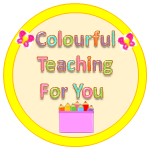
Today we’re going to talk how to how to help our children make and maintain friendships.
It’s important to teach our children how to make good, strong and healthy friendships because it’s essential too their mental and emotional health. Such friendships can help develop a child’s social, moral and emotional wellbeing as they learn how to communicate with each other, express their feelings constructively and manage their emotions.
If you’d like FREE resources for your class, to help your children manage their emotions, visit my Free Resource Library.
Good friends have the ability to bring joy into our lives, thereby relieving stress and providing us with much needed comfort and joy instead of isolation and loneliness. It can also shape our choices in life.
Therefore, it’s important to teach our children how to choose good friends and how to be a good friend as they also have an impact on others.
However, everyone is built differently, so not all children can naturally develop and maintain friendships. Some children struggle with social issues, such as social anxiety, uncertainty of how to talk to or behave in the midst of others, they may have trouble trusting others, and so forth. Others may have learning or developmental disorders that may be perceived at negatively by others due to lack of knowledge in this area.
Whatever the situation is, as parents and educators, it’s our job to uncover what the struggle is and guide them along this journey because it’s so important for children to have new friends.

Here are three ways that we can support our children in making new friends and maintaining friendships:
Actionable Steps:
#1. Have a Discussion
Read a book to your students about friendship. Then engage in reading comprehension strategies to allow them to process their learning. After, discuss what a good friend looks like and how it makes you feel to have them in your life. Also, have them look at how they can be good friends and how this would make others feel.
#2. Act it Out
Discuss and shows students how people converse, the types of topics that may arise and possible ways to respond. Then pair your students with each other- usually one who is shy with one who is more outgoing, and have them practice these skills.
At first, choose the topics that they need to discuss and as your children become more familiar with the situations, ease up and allow them to choose the topics to mimic spontaneous conversations that occur outside a controlled environment.
#3. Take it Out
In the beginning, especially if you know you have children who are new to the school, who have social anxiety or who struggle to make new friends, pay close attention to them as you work through this section.
Set everyone in the class up in either pairs or in small groups with clear expectations to help them meet new students.
Once they’ve gotten used to this setting and you’ve noted that they’ve all got friends, ease up by letting them choose their groups with the added caveat that others can join their groups.
When you’ve noticed that this is working, then you can pull back so that you are no longer having to monitor which group your students are in.
Nevertheless, for the first while, make sure to check in with them so that you know if everything’s going well or if further intervention is required.
Recap:
1. We looked at the importance of teaching your children how to make friends.
2. We discussed the things that might prevent your children from making friends.
3. We talked about three steps to do it: have a discussion, role play, and take it out.
Additional Thoughts:
I hope this helps you.
Remember to download your free planning guide and get started right away. Visit my Free Resource Library.
If you’d like additional resources for your classroom here are the three ways you can access them: 1) Free Resource Library; 2) At my store; or 3) The Creative Child Community.
Next Steps:
If you found this video beneficial, would you do me a favour? Share this with your family, your friends, your loved ones, your co-workers or someone who you think could benefit from this. Thank you!
Until I see you next time, remember to create, experience & teach from the heart.
Take care,
Charlotte

